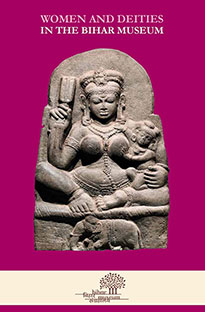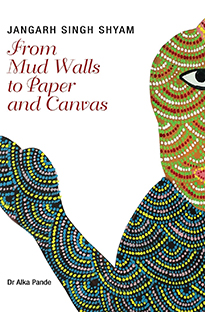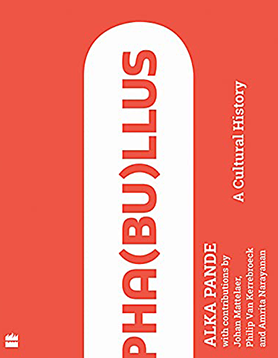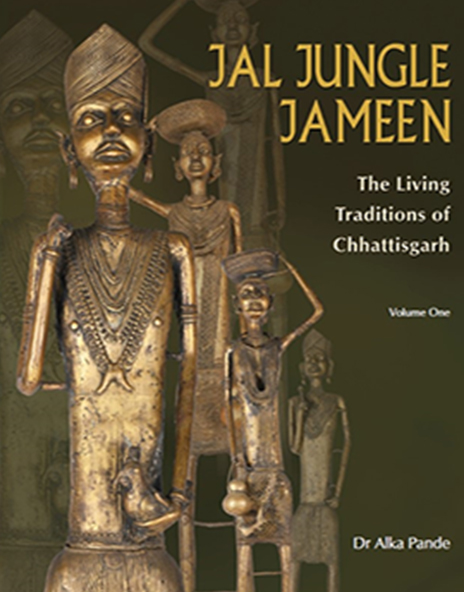
Publications Books & Journals
Al Fresco Kama : Love Under The Open Sky – 2022
Publisher: Speaking Tiger Books
‘The Freedom And Beauty Of The Green Outdoors—soft Beds Of Grass And Ferns The Caress Of The Breeze The Scent Of Flowers Birdsong And Moonlight—inflame Desire In The Nayak (hero) And The Nayika (heroine) In Ancient And Medieval Indian Art And Literature… Whether The Nayak And Nayika Be Mortals Or Gods, Love Is Always Erotic, And Its Most Beautiful Expression Happens In The Lap Of Nature, As The Lovers Give Themselves To Each Other Without Inhibition Beneath The Open Sky.’
In This Exquisite Book, One Of India’s Most Respected Authorities On Art, Aesthetics And Pre-modern Sexuality Brings Us Images That Celebrate Erotic Love In The Outdoors. With A Brilliant Introduction Providing The Context, She Has Put Together Glorious Visual Evidence Of The Freedom That Lovers Once Enjoyed In South Asia.
Women and Deities 2022
Women and Deities’ is a unique exhibition. For the first time ever, this entire display of antiquities from the prehistoric to the medieval period has been culled from the reserve collection of the Bihar Museum. All the 166 exhibits consisting of a total of 156 works in terracotta, bronze, and stone, miniature paintings, and ten contemporary art works show an unbroken tradition of 2,000 years of the representation of women in Indian art through the ages. These 156 traditional art objects have never been displayed at the Bihar Museum, which was set up in 2015. The eight contemporary paintings and two sculptures have been carefully added to bring viewers right up to present times.
The exhibition attempts to show the many manifestations of women in different materials, through different periods in time and additional stylistic attributes, beginning with the earliest terracotta figurine going back to 2nd century CE, to the Ganga created by the contemporary artist Jayasri Burman in bronze in 2011. The creative imagination of the artists, combined with the mastery of the medium, resulted in the production of some of the finest sculptures and the most beautiful paintings.
The range of women in the plastic arts of India spans a large cross-section of the country’s society and culture. From princesses to heroines, from goddesses to devotees, the many forms and manifestations of the feminine form are celebrated in this collection. What is interesting is that the art displayed in this exhibition is special because it primarily belongs to the region and therefore maps the zeitgeist in a linear narrative, an important and valuable pointer to art’s historical development.
From the sacred to the popular, the ‘Women and Deities’ exhibition has been specially curated in the Bihar Museum to represent the beauty, grace, adornment, and power of women themselves.
Most importantly, the exhibition is dedicated to the spectacular women of Bihar who are the engine drivers of change, transformation, and development.
Dr. Alka Pande
Chief Curator
August, 2022
Jangarh Singh Shyam – From Mud Walls to Paper and Canvas – Volume I, 2021
Publisher: Ajay Kumar Gupta , Fabuleux Art Heritage Pvt. Ltd.
Jangarh Singh Shyam’s work gives life and vision to a dynamic world of various myths and legends that are animated by the animals, birds, mountains and deities of his village, Patangarh, and of his community, the Gond tribe. Jangarh belonged to the Pardhan sect of the Gond tribe who are priests and storytellers entrusted with the very important task of carrying on the traditions and history of the Gond kings and keeping the many traditions and rituals alive through their music and songs. The songs and tales stayed in the artist’s mind and found a vivid representation on his canvas. Jangarh was able to recreate the textures and patterns of the walls on which traditional Gond art is painted. It was only after the artist was discovered at a young age by J. Swaminathan, that he transferred his art to canvas and paper, modernising the Gond art form. This book is a tribute to the Master of Gond Art.
Pha(bu)llus: A Cultural History – 2021
Phallic symbolism is one of the oldest and most prevalent motifs in religion, culture and art: the earliest known representations go back to prehistoric times. Starting off as a symbol of fertility, the phallus has gone through numerous interpretations in the way it is perceived, and its symbolic significance varies across cultures as well. In the west, the erotic symbolism of the phallus is often emphasized, whereas in India, the most widely seen representation of the phallus is religious, in the form of the lingam, associated with Shiva. Pha(bu)llus draws on the intricate network of ideas and beliefs regarding the phallus to present a fascinating look at the most obsessed-with body part in human history.
Bihar Museum Biennale 2021:Connecting People, Connecting Cultures
Why a Museum Biennale in Bihar
A confluence of royalty, culture and learning, the vision for the Bihar Museum is to be a world-class showcase for the history and heritage of the lands now known as Bihar. Its mission is to celebrate this ancient past and to inculcate a sense of pride in the residents of one of India’s most significant states. Against such a rich and diverse landscape, it is a natural step forward to create yet another historical first-a museum biennale that valorises museum collections and what they present to the world. A book on the the path breaking initiative by Bihar Museum which will lead the dialogue on the museums of today, moving beyond their roles as repositories of knowledge and knowledge-creation, as they engage, spark inquiry, exploration and creativity. The Bihar Museum Biennale 2021 becomes even more emblematic as a result of the challenges of the life-altering pandemic.
Shakti: 51 Sacred Peethas of the Goddess – 2020
This book is devoted to the understanding of the omnipresent and all-powerful Shakti and her sacred abodes known as Peethas. The story of Devi Sati and Lord Shiva ended tragically with the death of Sati. An angry and inconsolable Shiva took Sati’s lifeless body and started the ‘Rudra Tandava’ or the dance of destruction. To save the world, Lord Vishnu used his ‘sudarshan chakra’ to cut the body of Sati into 51 pieces and each part fell at different places on Earth and each become a revered Shakti Peetha. Renowned writer and historian Dr Alka Pande narrates that while the Shakti Peethas represent a single philosophical fold, they are a testament to the diverse legends of Shakti. Different peethas which became holy at the touch of Sati’s body have survived hundreds of centuries and have kept alive their local folklore of Shakti. Together they evoke the Mother Goddess as both the nourishing and the destructive force behind the existence of the cosmos. The 51 Peethas featured in the book can never be an absolute representation of the Peethas of the Goddess, since the Devi is anywhere and everywhere.
Celebrating Bihar Museum Collections 2019
Celebrating Museum Collections is a unique publication of the proceedings of the one-day seminar held at the Bihar Museum, Patna,on June 27, 2019.26 museum professionals attended the seminar and the publication includes the reflections and responses of the 26 resource people to the Bihar Museum. Designed by the internationally acclaimed architect Fumihiko Maki, the Bihar Museum is recognised as one of the most important contemporary museums in the country.
Jal Jungle Jameen: The Living Traditions of Chhattisgarh 2019
Jal Jungle Jameen: The Living Traditions of Chhattisgarh is not just a visual diary about the arts and aesthetics of Chhattisgarh. Through the reading of the cultural artefacts, it dips its feet into the insights of the Indic wisdom and knowledge systems, which emanate from the understanding and awareness of the interiority of people living in the bowels of the earth, namely the ethnic communities of the State. This book opens a window to the thoughtful, sustainable and organic lifestyle that shapes the unbroken traditions of the intangible wealth not only of the forest but of the country itself. From medicine to food, from ancestor worship to celebrating the everyday joys of living in the dense forests, this comprehensive reading of the life, times and rituals opens a window to the inner world of the forest dwellers.







